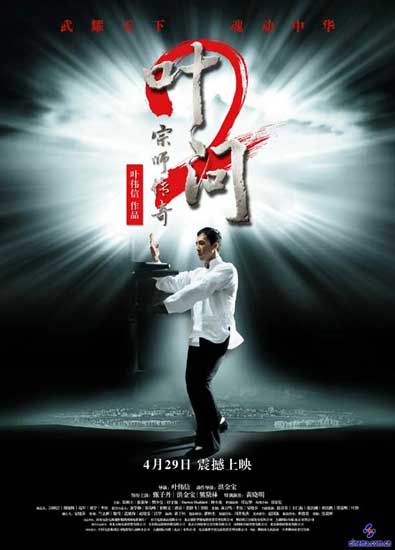Ip Man fights back
|
|
|
A poster of Ip Man 2 |
Ip Man's great success at the box office and the Hong Kong Film Awards make it impossible to ignore its long-expected sequel. Ip Man 2 turns out to be a watchable kung fu movie. But it is only outstanding martial arts choreography that rescues it.
Ip Man 2 takes up the story at the end of the first installment. The title character (Donnie Yen) moves to Hong Kong with his family from his hometown Foshan. To make a living, Ip starts to teach Wing Chun boxing in the early 1950s and recruits his first group of disciples, including Wong Leung (Huang Xiaoming).
Wong is a hot-tempered young man and confronts a well-connected local clan led by Hung Chun-nam (Sammo Hung). Hung, a master of Hung Quan boxing, challenges Ip. They draw in the fight. After that, they get along with each other even though Ip refuses to pay protection money to Hung.
Later, during a competition organized by the local police, Twister, a British boxing champion who has utter contempt for Chinese kung fu, beats Hung to death. The Chinese community is outraged. While suppressing public opinion, the government organizes another competition for Twister, who promises to accept any challenge from the Chinese community. Ip steps forward. Though fully prepared, he is badly mauled in a vicious contest before winning a narrow victory.
About 70 percent of the movie consists of fight scenes. This provides an arena for choreographer Sammo Hung to demonstrate his great vision. He seems to have done a much better job than the first movie. For instance, he staged the fierce fight between Ip Man and Hung Chun-nam on a large round table with upside down wooden chairs arranged around it. Watching them struggle to stay on the tottering table while grabbing at each others' throats keeps the audience on the edge of their seats. Through Hung's choreography, the leading characters show their personalities. Ip's moves are elegant and relaxed, revealing the gentleman in him. Twister tries to batter his opponents with merciless blows, reflecting his overblown ego and cruelty.
|
|
|
A still from the movie Ip Man 2 |
Hung's style is quite different from that of his well-known peer Yuen Woo-ping who designed the fight sequences for Crouching Tiger, Hidden Dragon, The Matrix, and Kill Bill. Hung allows gravity to work. His characters cannot fly anywhere they want to. They beat others and are beaten. Their movements, while elegant, fluent and smooth, are believable and close to reality. The effect is reminiscent of how director and choreographer Liu Chia-Liang shot The Legend of Drunken Master (Jui kuen II, 1994) starring Jackie Chan.
As for the story, it is a worn-out cliché. There is no improvement over the first installment. The characters portrayed are just as one-dimensional as in the first movie. Predictably the story explicitly appeals to national pride, as it is squarely targeted at the domestic market.
But it somehow touches on some issues relating to Hong Kong's old society – like police corruption and discrimination against the Chinese community under British rule. It also succeeds in conveying an important message about the ultimate goal of kung fu. As Ip Man puts it at the end of movie, Chinese kung fu is not about beating or killing, but about dignity.
The filmmakers have successfully recreated the streets, communities and markets that existed six decades ago in Hong Kong. These authentic-looking sets give the movie a sense of history.
 0
0 









Go to Forum >>0 Comments